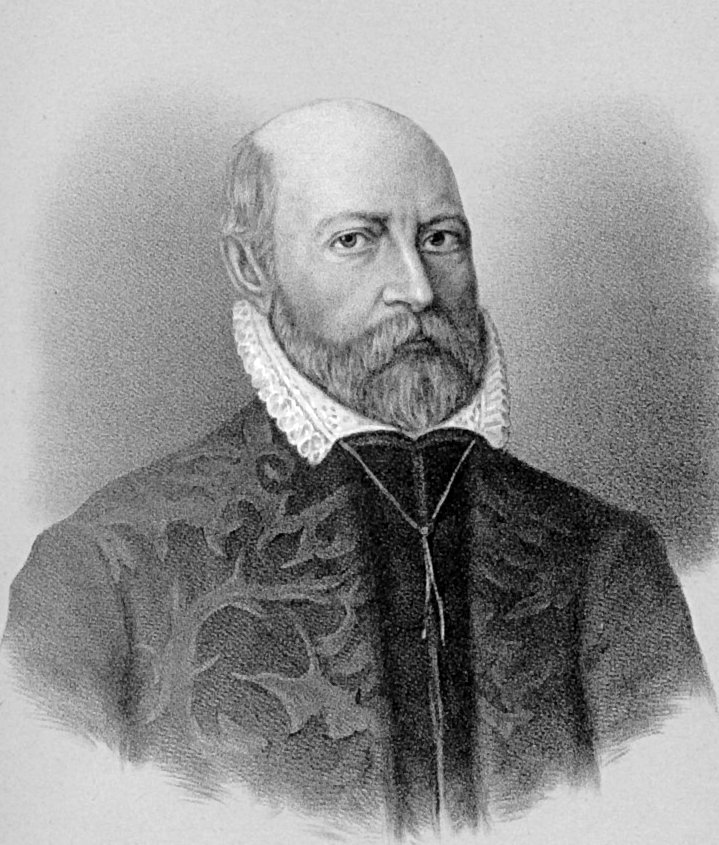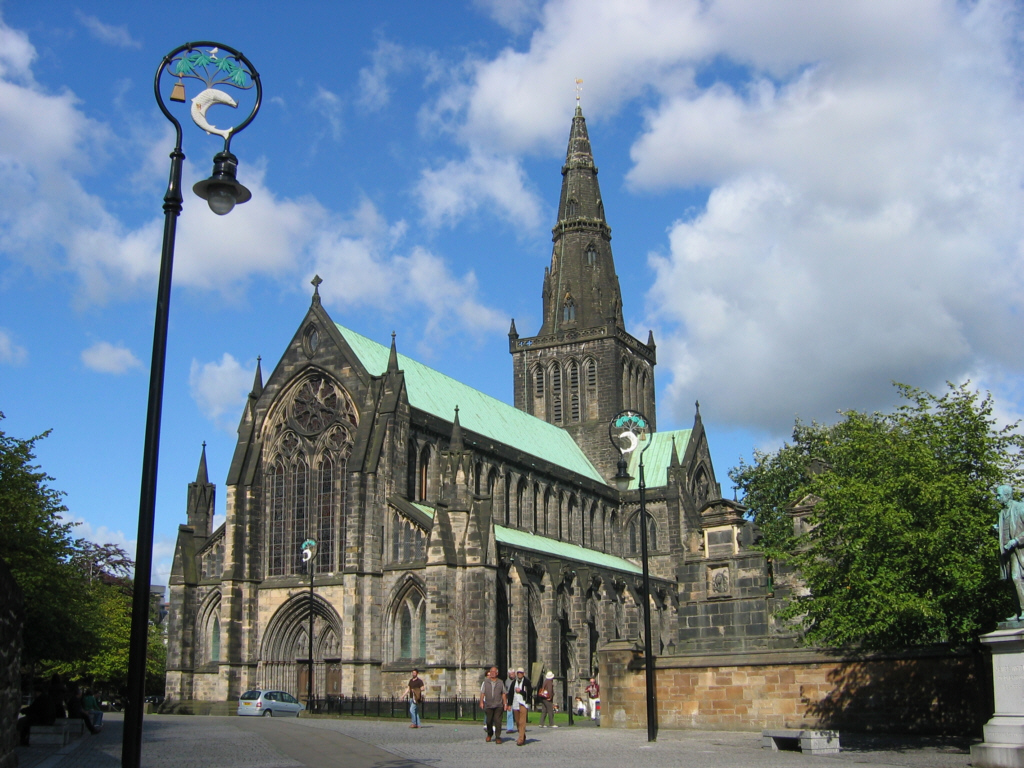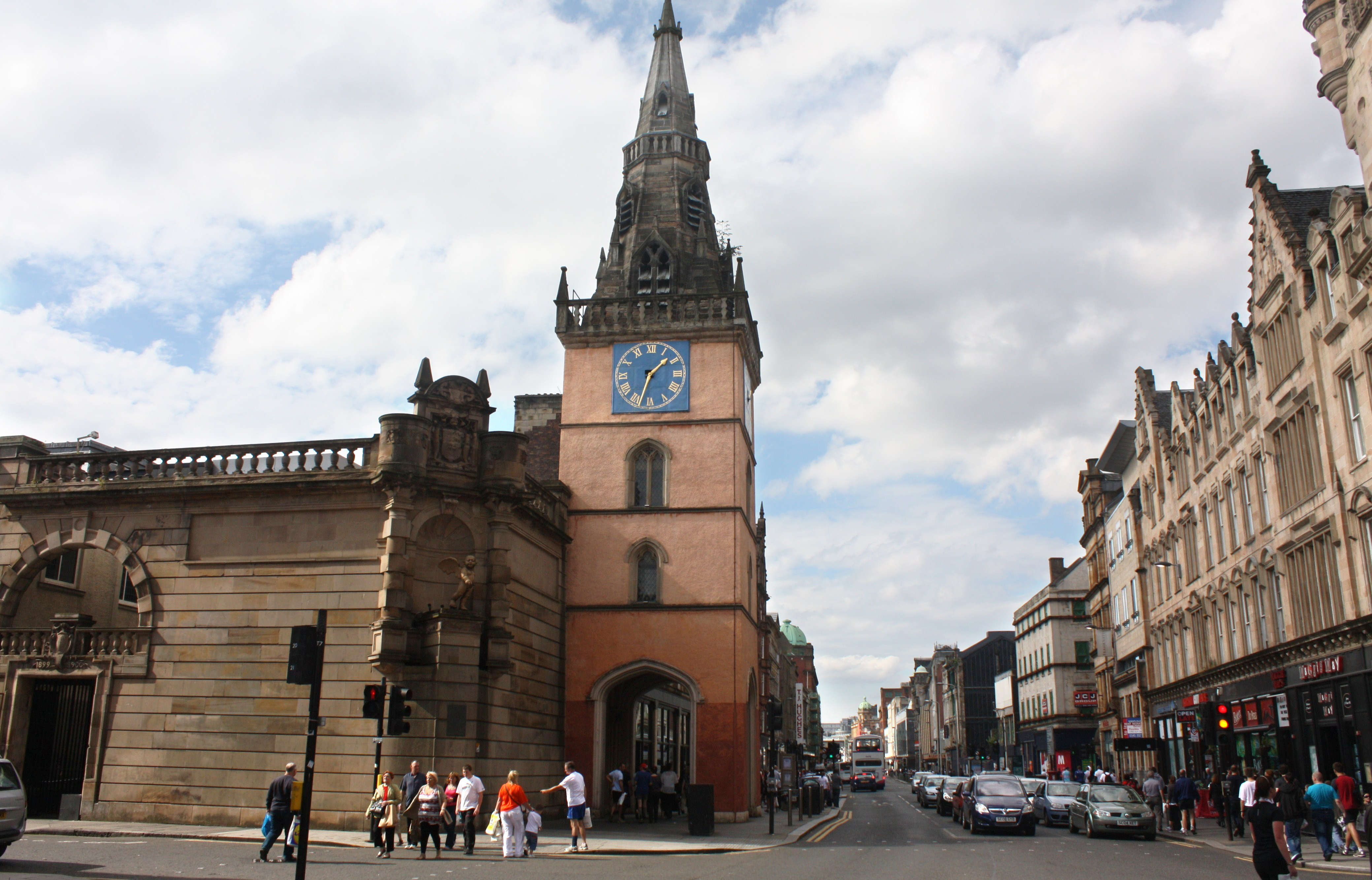|
George Hutcheson
George Hutcheson (died 1639), of Lambhill, Lanarkshire, was joint-founder with his younger brother Thomas Hutcheson, of Hutchesons' Hospital, Glasgow. Life George Hutcheson became a public writer and notary in Glasgow, and by his success in business added considerably to the wealth he had inherited from his father. For a long time he lived in the house where he carried on business, situated on the north side of the Trongate, near the Old Tolbooth. In 1611 he built for his residence the house on the River Kelvin near its junction with the Clyde, known as the Partick Castle, and, to some sources, as "Bishop's Castle," since it once was the site of a country retreat for the medieval Bishops of Glasgow. Hutcheson acquired a high reputation for honesty, and as an illustration of his moderation in his charges, it is stated that he would never take more than sixteen pennies Scots for writing an ordinary bond, be the sum ever so large. He died, apparently unmarried, 31 December 1639, ... [...More Info...] [...Related Items...] OR: [Wikipedia] [Google] [Baidu] |
Partick Castle
Partick Castle was located in Partick, now a Western suburb of Glasgow. It was built in 1611 for the Glasgow benefactor George Hutcheson and situated on the west bank of the River Kelvin. Description Writing in the early eighteenth century, Hamilton of Wishaw described the building: "...where Kelvin falls into Clyde, is the house of Pertique, a well-built and convenient house, well planted with barren timber and large gardens, which are enclosed with stone walls, and which formerly belonged to George Hutcheson in Glasgow, but now to John Crawford of Myltoun." According to the local historian James Napier, it was left empty in 1770 and was unroofed and in ruins by 1783. It was demolished during the 1830s. Another local writer records that its remains were removed in a single night to 'form dykes in the neighbouring fields'. This happened in 1836 or 1837. Napier also provides an anecdotal description of the building in its later days when it was a tenanted property: The account ... [...More Info...] [...Related Items...] OR: [Wikipedia] [Google] [Baidu] |
17th-century Scottish Lawyers
The 17th century lasted from January 1, 1601 (Roman numerals, MDCI), to December 31, 1700 (Roman numerals, MDCC). It falls into the early modern period of Europe and in that continent (whose impact on the world was increasing) was characterized by the Baroque cultural movement, the latter part of the Spanish Golden Age, the Dutch Golden Age, the French ''Grand Siècle'' dominated by Louis XIV, the Scientific Revolution, the world's first public company and megacorporation known as the Dutch East India Company, and according to some historians, the General Crisis. From the mid-17th century, European politics were increasingly dominated by the Kingdom of France of Louis XIV, where royal power was solidified domestically in the civil war of the Fronde. The semi-feudal territorial French nobility was weakened and subjugated to the power of an absolute monarchy through the reinvention of the Palace of Versailles from a hunting lodge to a gilded prison, in which a greatly expanded royal ... [...More Info...] [...Related Items...] OR: [Wikipedia] [Google] [Baidu] |
17th-century Scottish Businesspeople
The 17th century lasted from January 1, 1601 (Roman numerals, MDCI), to December 31, 1700 (Roman numerals, MDCC). It falls into the early modern period of Europe and in that continent (whose impact on the world was increasing) was characterized by the Baroque cultural movement, the latter part of the Spanish Golden Age, the Dutch Golden Age, the French ''Grand Siècle'' dominated by Louis XIV, the Scientific Revolution, the world's first public company and megacorporation known as the Dutch East India Company, and according to some historians, the General Crisis. From the mid-17th century, European politics were increasingly dominated by the Kingdom of France of Louis XIV, where royal power was solidified domestically in the civil war of the Fronde. The semi-feudal territorial French nobility was weakened and subjugated to the power of an absolute monarchy through the reinvention of the Palace of Versailles from a hunting lodge to a gilded prison, in which a greatly expanded royal ... [...More Info...] [...Related Items...] OR: [Wikipedia] [Google] [Baidu] |
1639 Deaths
Events January–March * January 14 – Connecticut's first constitution, the Fundamental Orders, is adopted. * January 19 – Hämeenlinna ( sv, Tavastehus) is granted privileges, after it separates from the Vanaja parish, as its own city in Tavastia. *c. January – The first printing press in British North America is started in Cambridge, Massachusetts, by Stephen Daye. * February 18 – In the course of the Eighty Years' War, a sea battle is fought in the English Channel off of the coast of Dunkirk between the navies of the United Provinces of the Netherlands, with 12 warships, and Spain, with 12 galleons and eight other ships. The Spanish are forced to flee after three of their ships are lost and 1,600 Spaniards killed or injured, while the Dutch sustain 1,700 casualties without the loss of a ship. * March 3 – The early settlement of Taunton, Massachusetts, is incorporated as a town. * March 13 – Harvard University is named for cle ... [...More Info...] [...Related Items...] OR: [Wikipedia] [Google] [Baidu] |
Hutchesons' Grammar School
Hutchesons' Grammar School is a co-educational independent day school for pupils aged 3-18 in Glasgow, Scotland. It was founded as Hutchesons' Boys' Grammar School by George Hutcheson and Thomas Hutcheson in 1641 It is a selective school, meaning prospective pupils must sit an entrance test to gain admission. The Boys' and Girls' schools amalgamated in 1976, at the grounds where the Boys' school had moved to almost two decades prior to form the current senior school. The Girls' school campus became the junior school and in 1994, a new pre-school block at the junior school was constructed. Today, "Hutchie", as the school is known informally, has around 1,300 pupils across its Pre-school, Junior and Senior Schools. In 2019 it had second-highest exam results in Scotland The School is governed by Hutchesons' Educational Trust The current Rector is Colin Gambles. History In 2001, the school expanded into Glasgow's West End when it merged with Laurel Park School and created ... [...More Info...] [...Related Items...] OR: [Wikipedia] [Google] [Baidu] |
Glasgow Cathedral
Glasgow Cathedral ( gd, Cathair-eaglais Ghlaschu) is a parish church of the Church of Scotland in Glasgow, Scotland. It is the oldest cathedral in mainland Scotland and the oldest building in Glasgow. The cathedral was the seat of the Archbishop of Glasgow, and the mother church of the Archdiocese of Glasgow and the Province of Glasgow, until the Scottish Reformation in the 16th century. Glasgow Cathedral and St Magnus Cathedral in Orkney are the only medieval cathedrals in Scotland to have survived the Reformation virtually intact. The medieval Bishop's Castle stood to the west of the cathedral until the 18th century. The cathedral is dedicated to Saint Mungo, the patron saint of Glasgow, whose tomb lies at the centre of the building's Lower Church. The first stone cathedral was dedicated in 1136, in the presence of David I. Fragments of this building have been found beneath the structure of the present cathedral, which was dedicated in 1197, although much of the present cathedr ... [...More Info...] [...Related Items...] OR: [Wikipedia] [Google] [Baidu] |
Bishops Of Glasgow
The Archbishop of Glasgow is an archiepiscopal title that takes its name after the city of Glasgow in Scotland. The position and title were abolished by the Church of Scotland in 1689; and, in the Scottish Episcopal Church, it is now part of the Episcopal bishopric of Glasgow and Galloway. In the Roman Catholic Church, the title was restored by Pope Leo XIII in 1878. The present Archbishop is William Nolan, who was installed on 26 February 2022. History The Diocese of Glasgow originates in the period of the reign of David I, Prince of the Cumbrians, but the earliest attested bishops come from the 11th century, appointees of the Archbishop of York. The episcopal seat was located at Glasgow Cathedral. In 1492, the diocese was elevated to an archdiocese by Pope Innocent VIII. After the Scottish church broke its links with Rome in 1560, the archbishopric continued under the independent Scottish church until 1689 when Episcopacy in the established Church of Scotland was finally ... [...More Info...] [...Related Items...] OR: [Wikipedia] [Google] [Baidu] |
River Kelvin
The River Kelvin (Scottish Gaelic: ''Abhainn Cheilbhinn'') is a tributary of the River Clyde in northern and northeastern Glasgow, Scotland. It rises on the moor south east of the village of Banton, east of Kilsyth. At almost long, it initially flows south to Dullatur Bog where it falls into a man made trench and takes a ninety degree turn flowing west through Strathkelvin and along the northern boundary of the bog parallel with the Forth and Clyde Canal. The University of Glasgow is situated by the river, in Gilmorehill. In 1892, the title of ''Baron Kelvin'' was created for physicist and engineer William Thomson, a professor at the university. The name "kelvin" for the unit of temperature, chosen in honour of Lord Kelvin, thus traces its origins to the river. Etymology The hydronym ''Kelvin'' is probably of Brittonic origin. It may involve ''*celeμïn'', of which the Welsh cognate ''celefyn'' means "stem, stalk", or else the zero-grade of the Indo European root of t ... [...More Info...] [...Related Items...] OR: [Wikipedia] [Google] [Baidu] |
Lambhill
Lambhill is an area in the city of Glasgow, Scotland. It is situated north of the River Clyde, approximately north of the city centre. Lambhill is a mainly residential area comprising both council and private housing. Residents are of a mixed age group. Lambhill has been in existence since the middle 18th Century, the original settlement probably coming from the north bank of the Forth and Clyde Canal (known as the Shangi, after a sailing captain who mentioned that the settlement reminded him of Shanghai). Many working men were employed in the nearby mine in Cadder. In nearby Lambhill Cemetery there is a memorial to the Cadder Pit disaster of 3 August 1913, which claimed 22 lives. The funeral service for the disaster was held in St Agnes Church on Balmore Road. Benny Lynch the great Glasgow boxer also is buried in Lambhill Cemetery which is bordered by Western Necropolis. Hillend Road would appear to be one of the earliest streets to be built and the houses are of mixed vintage ... [...More Info...] [...Related Items...] OR: [Wikipedia] [Google] [Baidu] |
Old Tolbooth
The Old Tolbooth was an important municipal building in the city of Edinburgh, Scotland for more than 400 years. The medieval structure, which was located at the northwest corner of St Giles' Cathedral and was attached to the west end of the Luckenbooths on the High Street in the Old Town, was first established in the 14th century by royal charter. Over the years it served a variety of purposes such as housing the Burgh Council, early meetings of the Parliament of Scotland and the Court of Session. The Tolbooth was also the burgh's main jail where, in addition to incarceration, physical punishment and torture were routinely conducted. From 1785 public executions were carried out. In 1817 the buildings, which had been rebuilt and renovated several times, were demolished. History A deed in the chartulary of St Giles' Cathedral indicates there was already a pretorium (an earlier Latin term for a tolbooth) in Edinburgh as early as 1368. Following the burnings of Edinburgh by Edw ... [...More Info...] [...Related Items...] OR: [Wikipedia] [Google] [Baidu] |
Trongate
Trongate is one of the oldest streets in the city of Glasgow, Scotland. Trongate begins at Glasgow Cross, where the steeple of the old Glasgow Tolbooth is situated, being the original centre of medieval Glasgow, and goes westward changing its name to Argyle Street at Glassford Street. History Previously known as St Thenew's Gait (the way to the supposed site of St Thenew`s burial) it was around the start of the 1500s that the name Trongate first began to be used. The name comes by virtue of a weighbeam erected in the mid-16th century, used for all goods requiring to be weighed for duty reasons, including from early shipping on the Clyde. ''Tron'' is a Scots word of Norman origin for weighing scales. The Trongate was one of the areas which was affected by a large fire on 17 June 1652 which destroyed a third of the town and left around 1,000 families homeless. The fire also affected the areas of Saltmarket and Gallowgate. The Tron church was founded as the Collegiate Churc ... [...More Info...] [...Related Items...] OR: [Wikipedia] [Google] [Baidu] |








